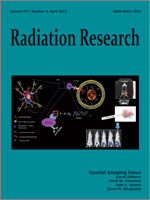Electron paramagnetic resonance imaging (EPRI) can be used to noninvasively and quantitatively obtain three-dimensional maps of tumor pO2. The paramagnetic tracer triarylmethyl (TAM), a substituted trityl radical moiety, is not toxic to animals and provides narrow isotropic spectra, which is ideal for in vivo EPR imaging experiments. From the oxygen-induced spectral broadening of TAM, pO2 maps can be derived using EPRI. The instrumentation consists of an EPRI spectrometer and 7T magnetic resonance imaging (MRI) system both operating at a common radiofrequency of 300 MHz. Anatomic images obtained by MRI can be overlaid with pO2 maps obtained from EPRI. With imaging times of less than 3 min, it was possible to monitor the dynamics of oxygen changes in tumor and distinguish chronically hypoxic regions from acutely hypoxic regions. In this article, the principles of pO2 imaging with EPR and some relevant examples of tumor imaging are reviewed.
How to translate text using browser tools
2 March 2012
Electron Paramagnetic Resonance Imaging of Tumor pO2
Murali C. Krishna,
Shingo Matsumoto,
Hironobu Yasui,
Keita Saito,
Nallathamby Devasahayam,
Sankaran Subramanian,
James B. Mitchell
ACCESS THE FULL ARTICLE

Radiation Research
Vol. 177 • No. 4
April 2012
Vol. 177 • No. 4
April 2012




